The work of famed modernist architect Marcel Breuer is not immediately identifiable with the pastoral. His projects, ranging from New York City’s former Whitney Museum of American Art to the UNESCO Headquarters building in Paris (with Pier Luigi Nervi and Bernard Zehrfuss) among countless other edifices, were often monumental in scale and hewn of form-worked concrete in the Brutalist style. In stark contrast to those structures is the architect’s summer cottage, which he designed and built, within the sanded forests of Cape Cod, Massachusetts, a world away from the distractions of urban life and fame. The home was completed in 1949, and the successive decades have taken their toll on the property, even though the architect’s son, Tamas Breuer, now 80, has continued to periodically spend time there and maintain its contents—which includes an art collection, books, and personal photographs. Now, with its impending sale by Tamas, the Cape Cod Modern House Trust (CCMHT) is leading a campaign to raise at least $1.4 million to purchase the cottage and its contents and embark on the restoration of both the structure and its grounds. Although the property is under contract to the CCMHT, in lieu of reaching that fundraising goal, it could be purchased privately, and demolished.
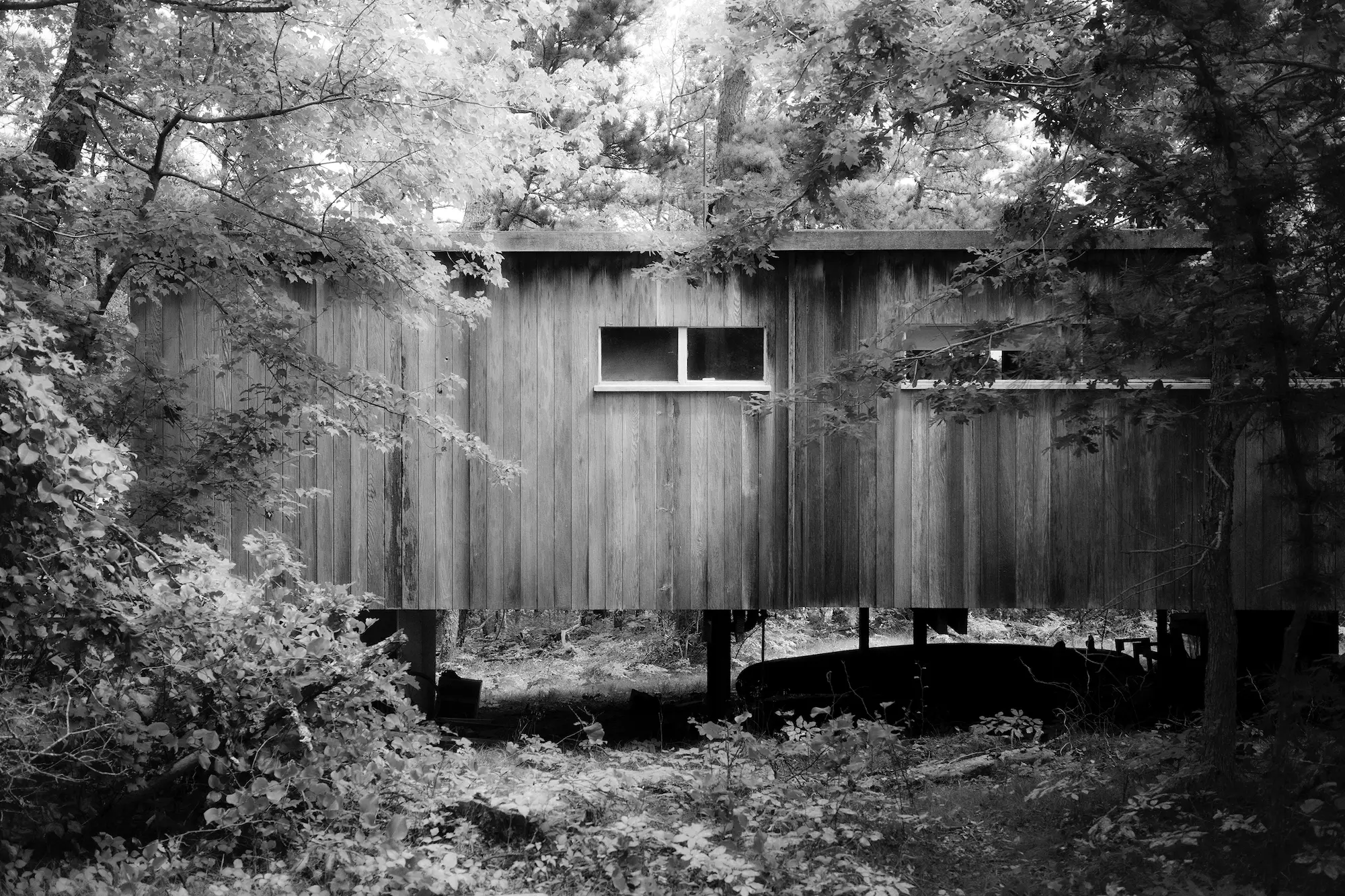
The house, which includes a studio pictured here, is situated in a forested area of Wellfleet; a potential demolition poses a risk to the local ecosystem. Photo by Aaron Binaco, courtesy CCMHT
The CCMHT is a steward for the fast-disappearing modernist heritage of Cape Cod. Since its founding 15 years ago by local architect and contractor Peter McMahon, the nonprofit has acquired long-term leases of several historic homes in the oyster-famous town of Wellfleet, such as Charles Zehnder’s Kugel/Gips House and Jack Hall’s The Hatch House. The properties, through the conservatorship of the CCMHT, are restored and available to the public through tours and open houses, as well as summer rentals.
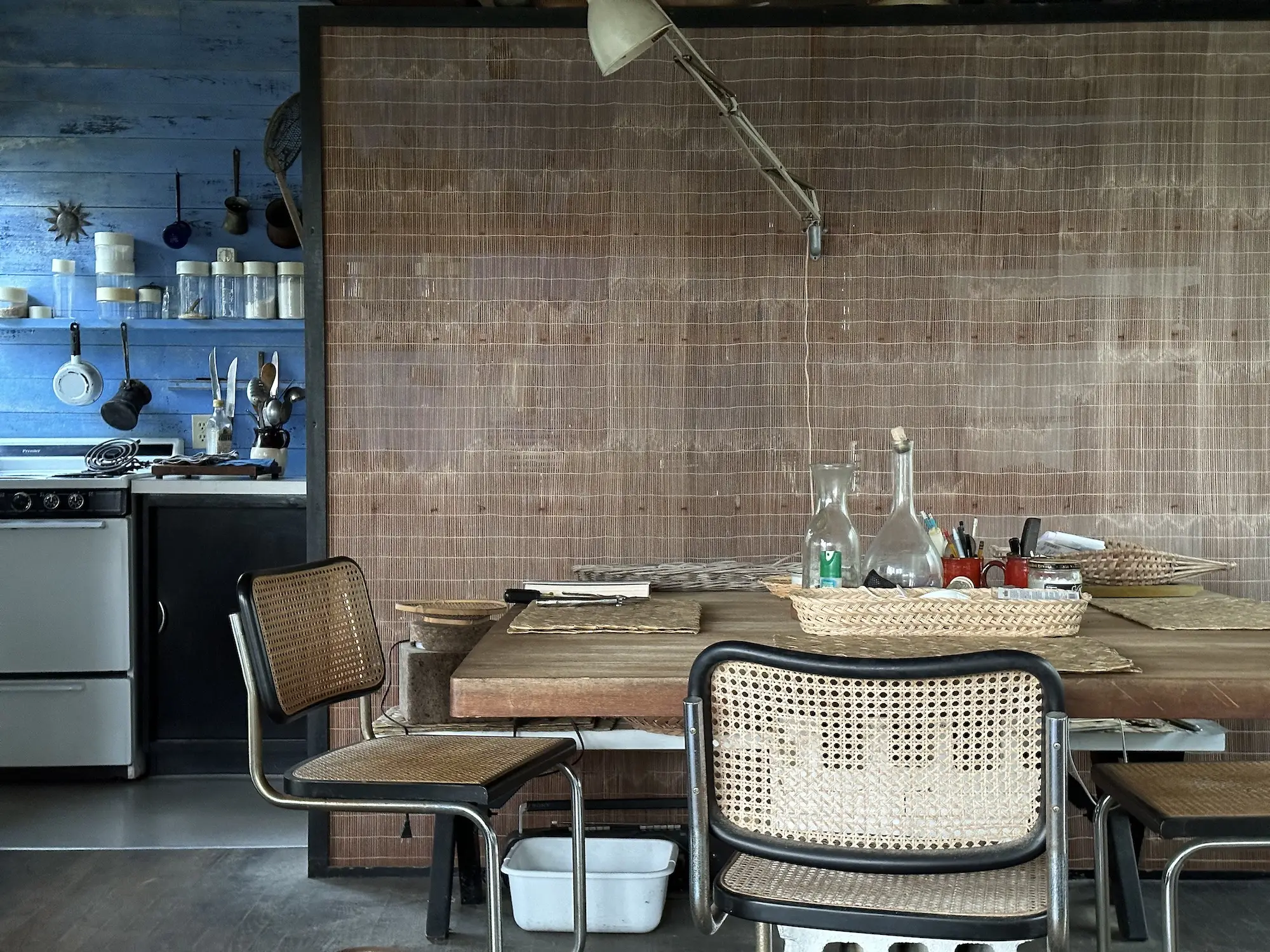
1
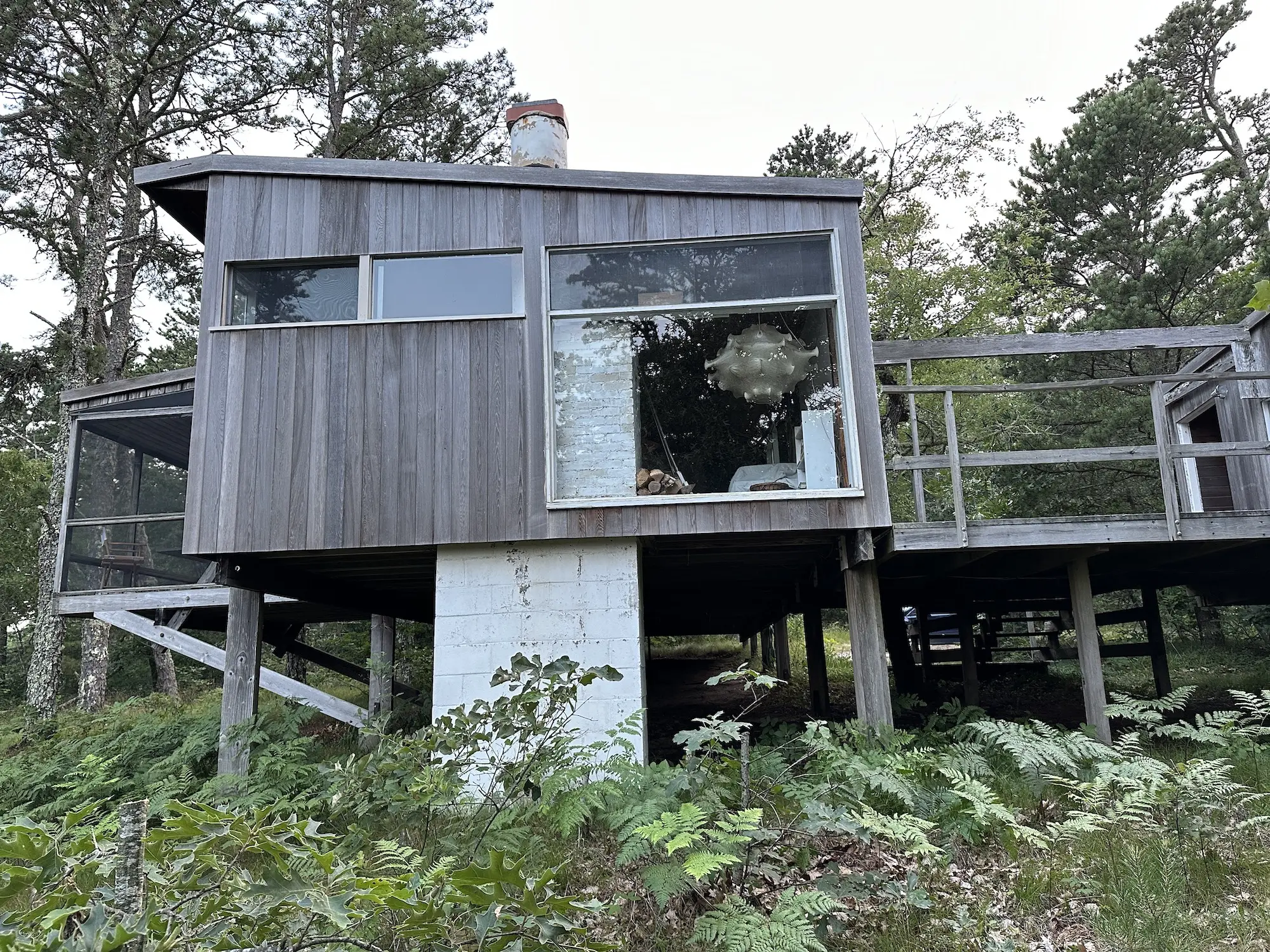
2
Dining area of main house (1); the house, constructed of wood and elevated above the coastal landscape on stilts, is in dire need of repair. Photos by Marta Kuzma, courtesy CCMHT
Why is the Breuer home significant and what is at stake in its acquisition by a private owner? For McMahon, the issue is twofold, both cultural and ecological. The house is in many respects a time capsule of Breuer’s prolific career as an architect and furniture designer; it’s modest wooden structure, elevated on posts and nested between three ponds, served as something of an artist’s colony for Hungary-born Breuer and his global network of compatriots. Over the years, it acted as a laboratory for new ideas, architectural and artistic; and its contents include one-of-a-kind furniture, sculpture, textiles, and art designed by Breuer or the likes of Herbert Bayer and Xanti Schawinsky, and others. Notably, the property is the final resting place of Marcel and his wife Connie’s ashes.
“It was his own house, and he was constantly working on it, including two additions. And fortunately, we have his son’s photographs of the house over 35 years, which document all of the alterations, all of the furniture that he designed and moved around, and all of the art. The photos also help to document everyone who visited, from Bauhaus alumni to colleagues and students,” McMahon told RECORD, adding: “The house is a real record of all his relationships, friendships, and people he worked with.”
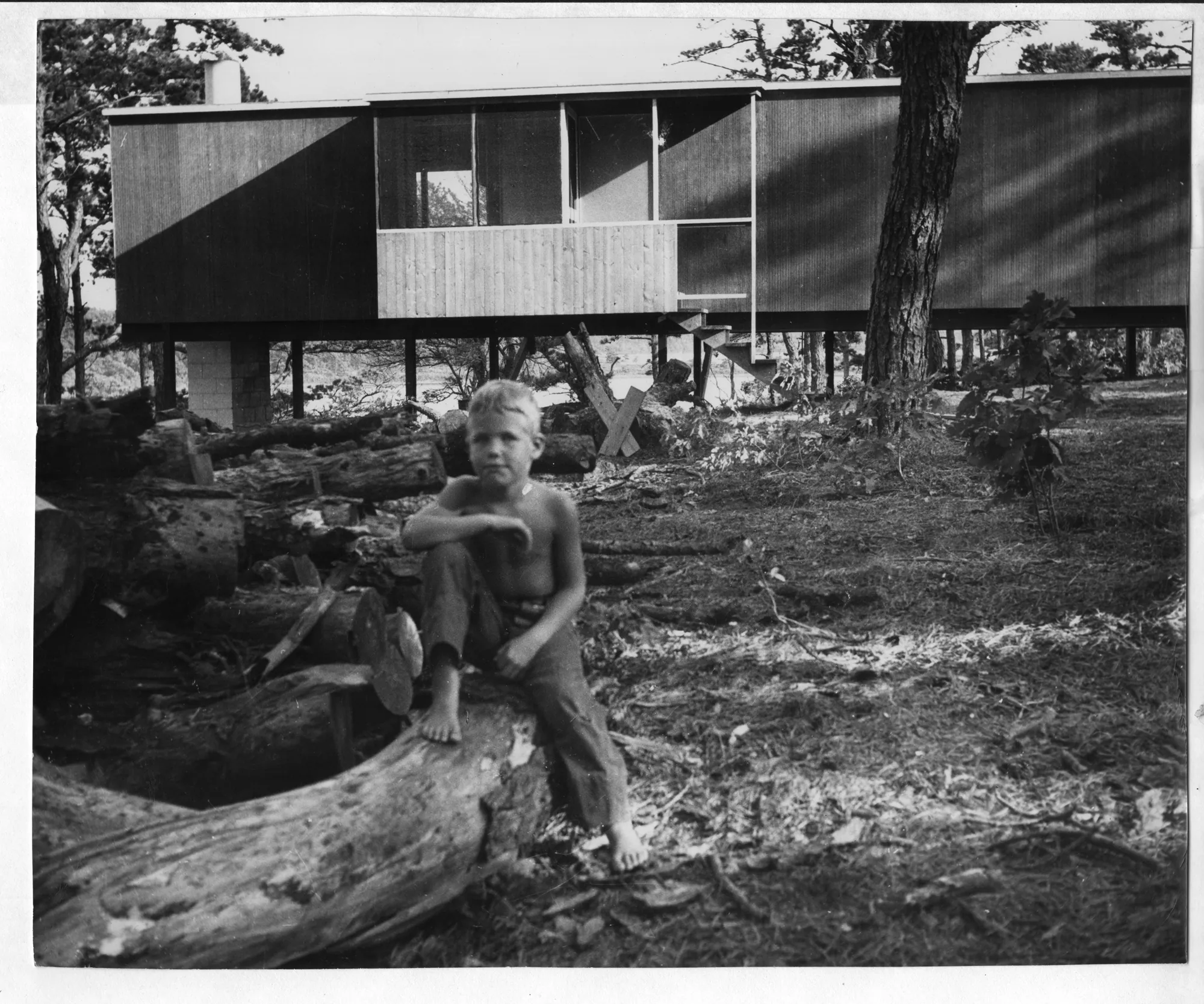
Tamas Breuer in front on the cottage circa 1950. Photographer unknown, courtesy CCMHT
In the spirit of that interdisciplinary collaboration, CCMHT intends to use the structure as a residence for an annual fellowship, as well as housing for scholars and visiting students involved in the home’s archiving and preservation efforts.
The house is also comparatively modest in size, totaling approximately 1,700 square feet within the four-acre grounds. Should a private owner acquire the property, they could, without any zoning variance, demolish the home and build a house twice as large on the site, threatening the headwaters of the adjacent Herring River and the surrounding watershed.
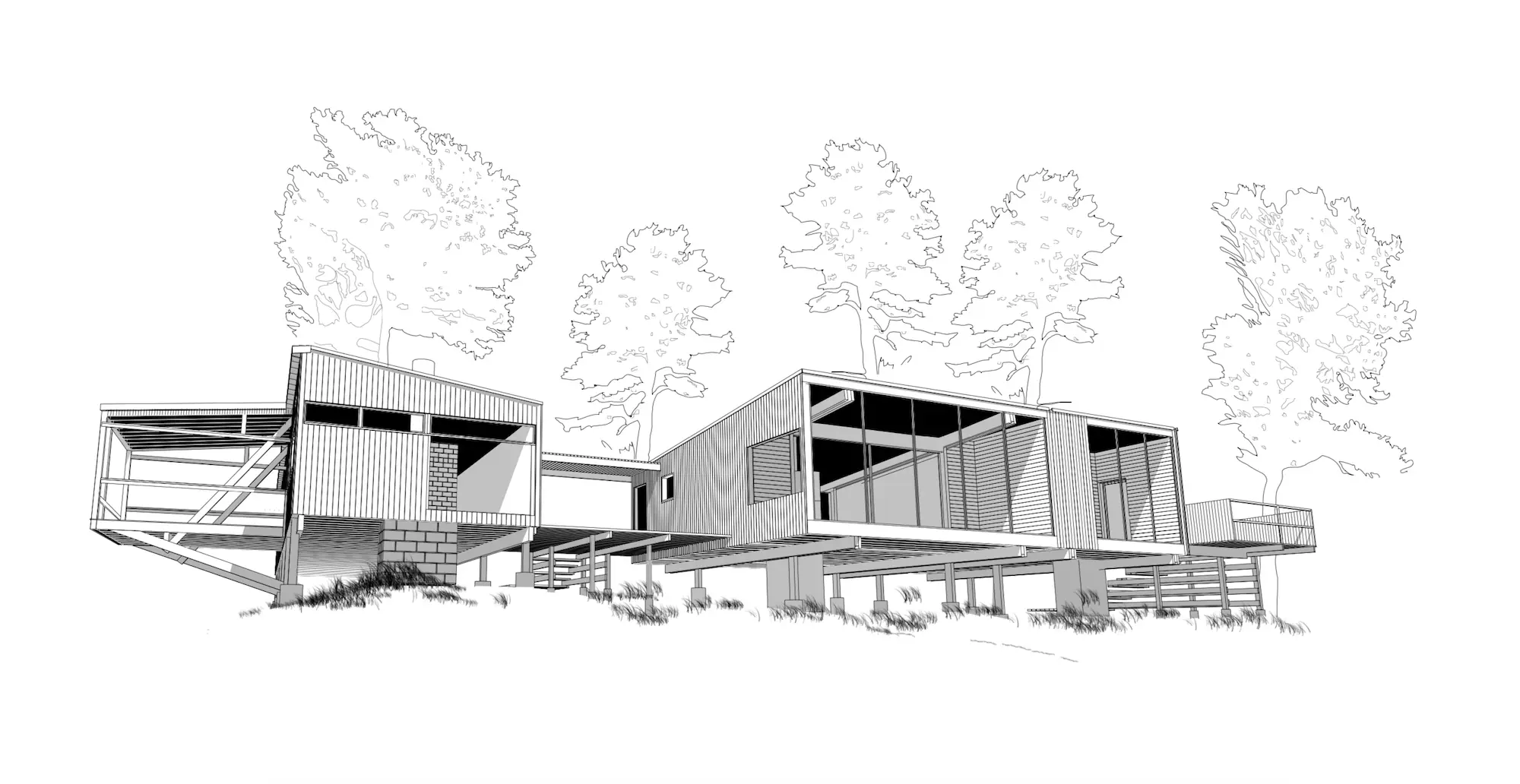
Rendering of the house from the east. Image courtesy CCMHT
The preservation of Modern homes in the American Northeast is an issue of longstanding concern for Docomomo US, the United States chapter of the international organization, especially following the demolition of the Breuer-designed Geller House on Long Island last year. “Really, the bulk of our work is just trying to talk to the general public to help them understand why a particular house is significant, even if they are modest in size,” said Liz Waytkus, executive director of Docomomo US. “We are excited that more people are becoming aware that the house exists, and that it will most likely be turned into a place of public education.”
Further information regarding the fundraising efforts to save the home can be found here.



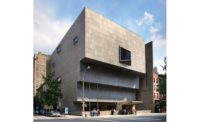
Post a comment to this article
Report Abusive Comment